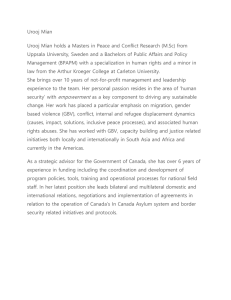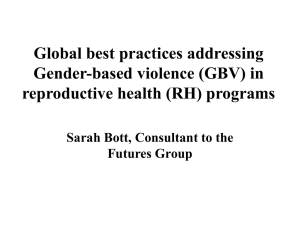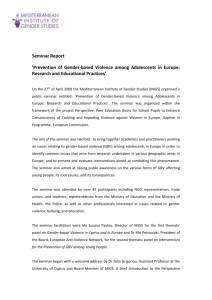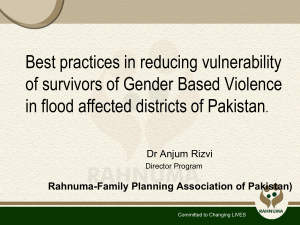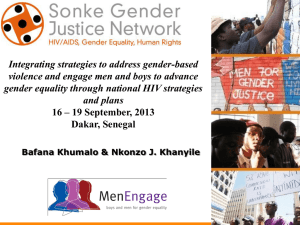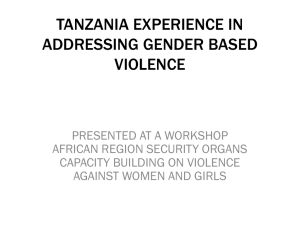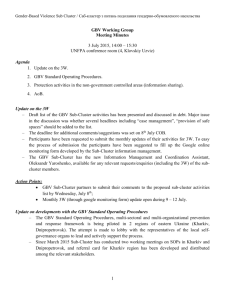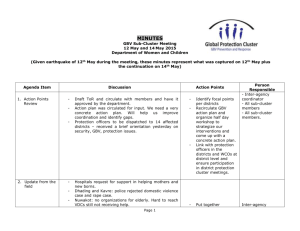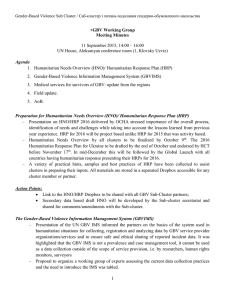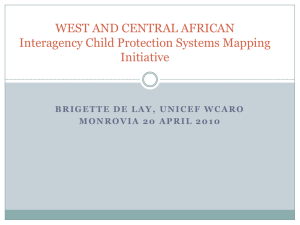BK Overview of NCGBV & NSP - Sept16
advertisement
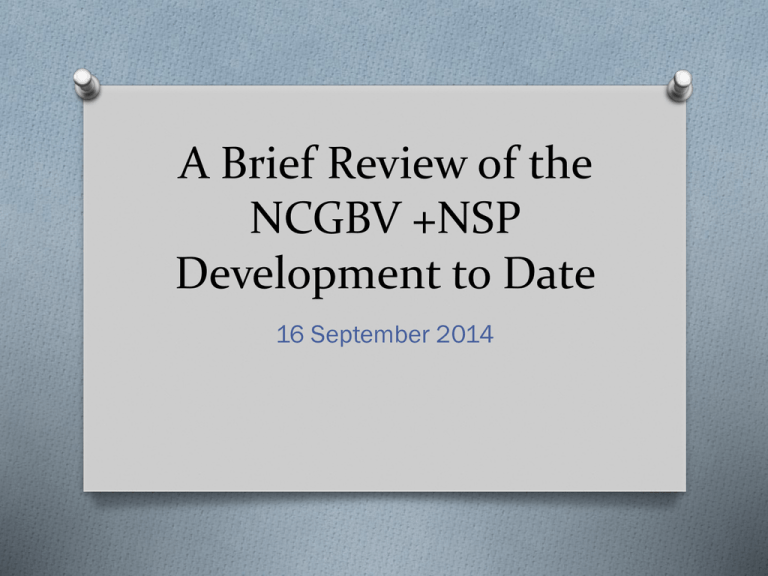
A Brief Review of the NCGBV +NSP Development to Date 16 September 2014 Who is responsible for addressing GBV? O There are many government agencies responsible for ensuring that GBV is addressed. These include the police, the justice system, correctional services, the departments of Education and Health, as well as Social Services. Furthermore, GBV includes violence against children given its gendered dimensions, and violence against the LGBTI community. Who is responsible for addressing GBV? O However, community organisations, the private sector, faith-based organisations, universities and all sectors in society also have an important role to play in preventing and addressing GBV; O GBV – like HIV – requires a multi-sectoral response to address prevention, care and support for survivors and victims, and rehabilitation for perpetrators – it’s a challenge requiring all of our involvement What is the NCGBV? O The National Council on Gender-Based Violence (NCGBV) was established in December 2012 with a mandate to “provide high level political leadership, strategic guidance and coherence of strategies across sectors to address the high levels of GBV in South Africa.” O The Council is comprised of representatives from 18 government departments and agencies, chapter 9 institutions and20 civil society organisations. Impetus for the GBV Council O After the brutal deaths of Anene Booysens and Reeva Steenkamp, the Minister of Women, Children, and People with Disabilities was reminded that the Council was an important mechanism 1st Year of Operations There was little clarity or traction for the first year of the Council’s operations, although all actors agreed on the need for the Council given the many challenges of funding, poor coordination, severe problems with the criminal justice system, and no prevention agenda O Despite shared agreement on the potential value of the Council, it has not been functioned well: O (1) Meetings are often called last minute and stakeholders are not sure what their roles are; O (2) The GBV Sector is suspicious and unclear about the mandate and focus of the Council; O (3) There has been poor technical and political leadership thus far O NSP as the priority O Civil society members of the Council met and agreed that the top priority for the Council must be the creation of a fullycosted NSP for GBV O The Council issued an RFP for facilitating the creation of an NSP which was awarded to the Human Science Research Council HSRC Process O HSRC proposed a 3 phase process: literature review, focus groups and then consultations in 5 provinces on a draft NSP O The final draft of the NSP was meant to be completed by October/November 2014 May 2014-Present O In May 2014, the Ministry of Women, Children and People with Disabilities was disbanded, and a new Ministry of Women established. O During this transition the activities of the National Council on GBV have been suspended and it has become unclear where the Council will land. O The CEO of the Council has left as of 5 September O The HSRC issued its preliminary Phase 1 literature review in August but the rest of the process is in the air Civil Society Response O Efforts to engage the new Minister have not been fruitful: O Letter to the Minister [20 organizations] O Press statements on budget speech and Women’s Day O Requests for meetings Sonke’s Engagement O Sonke has some resources from Ford Foundation to support greater civil society engagement in the Council O Had planned to host a series of provincial hearings and consultations to develop the NSP – to complement HSRC process—now on hold O Launched monthly GBV Update O Developing a shadow NSP document to pressure government to put in place a plan
